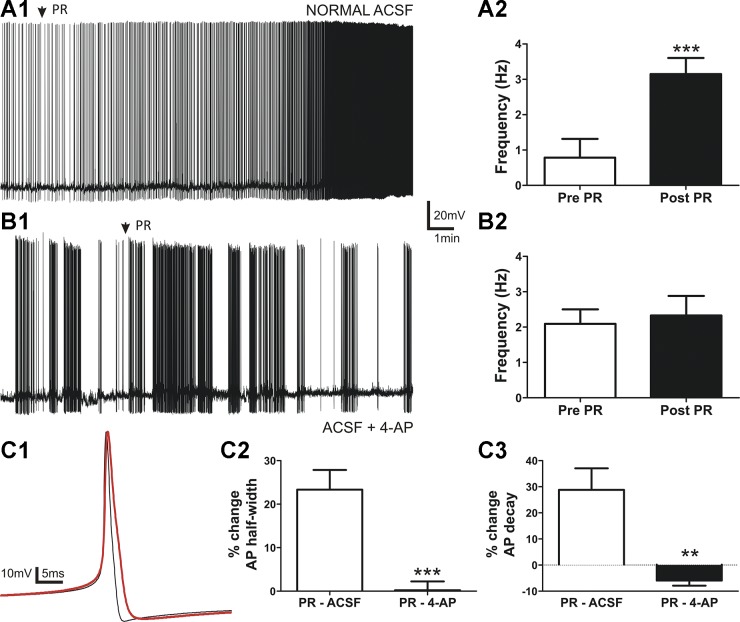Fig. 5.
The PR-mediated increase of firing frequency and changes in the action potential (AP) waveform are abolished by the IA blocker 4-aminopyridine (4-AP). A,1: sample trace showing that PR (2.5 nM, 5 s) increased the firing discharge of VP neurons. A,2: summary data of mean firing frequency before and after PR (n = 9) in control artificial cerebrospinal fluid (aCSF). This excitatory effect was blocked in the presence of 4-AP (5 mM; B,1). The plot shown in B,2 shows mean firing frequencies before and after PR in 4-AP (n = 11, 4-aminopyridine). C,1: representative examples of averaged APs before (black trace; n = 18) and after PR (red trace; n = 172) from a representative neuron in control aCSF. Note the increased half-width, slower decay time, and smaller hyperpolarizing afterpotential peak on the red trace. Plots of mean percent change of AP half-width (C,2) and decay time (C,3) after PR in normal aCSF (white; n = 10) and in the presence of 4-AP (black; n = 9) are shown. ***P < 0.001 vs. pre-PR using Student’s paired t-test; **P < 0.01 and ***P < 0.001 vs. PR-aCSF by unpaired t-test.

